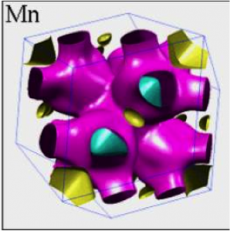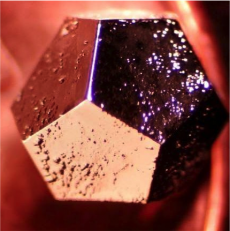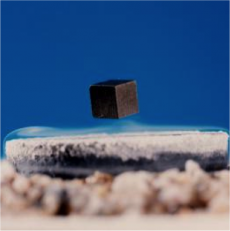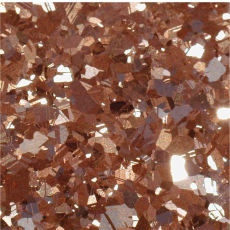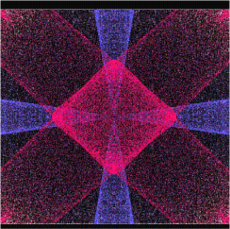Condensed Matter Theory 1
Lecture contents
Condensed Matter Theory I: The complexity of 1023 particles interacting with each other in a solid give rise to many emergent phenomena one would not predict from the simple interactions between two electrons. In this lecture we will, starting from simple models and theories work our way into the contemporary theory of many particle physics.
Concepts of many particle systems discused are:
- The Drude Theory of Metals
- The Sommerfeld Theory of Metals
- Electrons in a periodic potential
- Tight binding
- Band-structure, Fermi-surface, Density of states, Metals, Insulators, Semiconductors
- Semiconductor physics
- Surface states
- Phonons and disorder
- Relativistic corrections - spin-orbit coupling
- Phase transitions and topology
Theoretical / Mathematical tools used will be
- Second quantization
- Green's functions (on an independent particle level)
- Self energy (for surface states and disorder)
Levels of theory discussed will be
- Hartree-Fock
- Density functional theory
Materialien
- 2018_10_17_Drude_model.pptx
- 2018_10_17_Experimental_observations_leading_to_Drudes_model.pdf
- 2018_10_17_Introduction.pdf
- 2018_10_17_Introduction_More_is_different.pptx
- 2018_10_19_Drude_model.pdf
- 2018_10_24_Sommerfeld_model_second_quantization.pdf
- 2018_10_26_Sommerfeld_model.pdf
- 2018_10_31_Bloch_bands_in_periodic_potentials_1.pdf
- 2018_11_02_Bloch_bands_in_periodic_potentials_2.pdf
- 2018_11_02_Examples_of_free_electron_bands_in_a_weak_periodic_potential.pptx
- 2018_11_09_Hartree_Fock.pdf
- 2018_11_14_Density_Functional_Theory.pdf
- 2018_11_16_Tight_binding_theory.pdf
- 2018_11_21_Wannier_functions.pdf
- 2018_11_23_Slater_Koster_Table_one.nb
- 2018_11_23_Slater_Koster_Table_one.pdf
- 2018_11_23_TIght_binding_examples.pptx
- 2018_11_23_Tight_binding_with_s_p_and_d_orbitals_plus_examples.pdf
- 2018_11_23_notes_slater_koster_tight_binding.nb
- 2018_11_23_notes_slater_koster_tight_binding.pdf
- 2018_11_28_Green_s_functions.pdf
- 2018_11_30_Single_Impurity.pdf
- 2018_12_05_Green_s_functions_using_continued_fractions.pdf
- 2018_12_07_Surface_states.pdf
- 2018_12_11_exponentiall_binding_of_surface_state.pdf
- 2018_12_11_spin-orbit.pptx
- 2018_12_14_Topological_Phases.pdf
- 2018_12_19_Topological_surface_states.pdf
- 2018_12_19_Topological_surface_states.pptx
- 2018_12_21_Self_energy_due_to_disorder.pdf
- 2019_01_09_Classical_Harmonic_Oscillator.nb
- 2019_01_09_Classical_Harmonic_Oscillator.pdf
- 2019_01_09_Response_functions.pdf
- 2019_01_11_H_atom_response.pptx
- 2019_01_11_Quantum_two_level_system.nb
- 2019_01_11_Quantum_two_level_system.pdf
- 2019_01_11_Response_functions_two_level_system.pdf
- 2019_01_16_Response_functions_dissipation_and_time_domain.pdf
- 2019_01_18_Optical_transitions_in_solids_using_band-structure.pdf
- 2019_01_23_Review_part_I.pdf
- 2019_01_25_Review_part_II.pdf
Übungsblätter
Übungsgruppen
- Gruppe 01
22 Teilnehmer/innen
Philos.-weg 12 / R 105, Mo 9:15 - 13:00
Recommended literature
-
Ashcroft / Mermin
Solid State Physics -
Kittel
Introduction to Solid State Physics -
Mattuck
A guide to Feynman Diagrams in the Many-Body Problem -
E.N. Economou
Green's Functions in Quantum Physics
The lecturenotes will be made available as the lecture progressess, they however should not be your only source of information.
Assumed background
It is assumed students have successfully finnesed the following lectures
- Theoretical Statistical Physics
- Experimentalphysik V: Molekül- und Festkörperphysik




